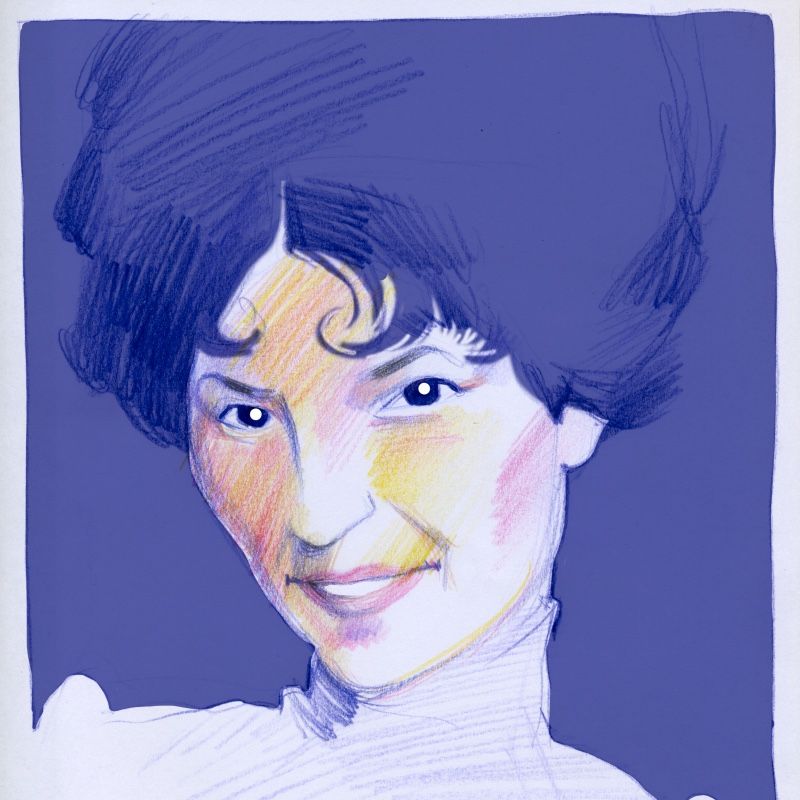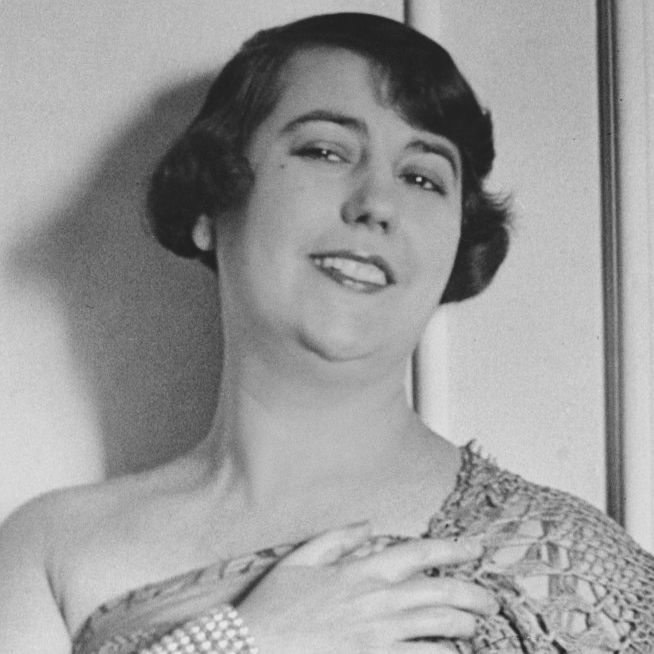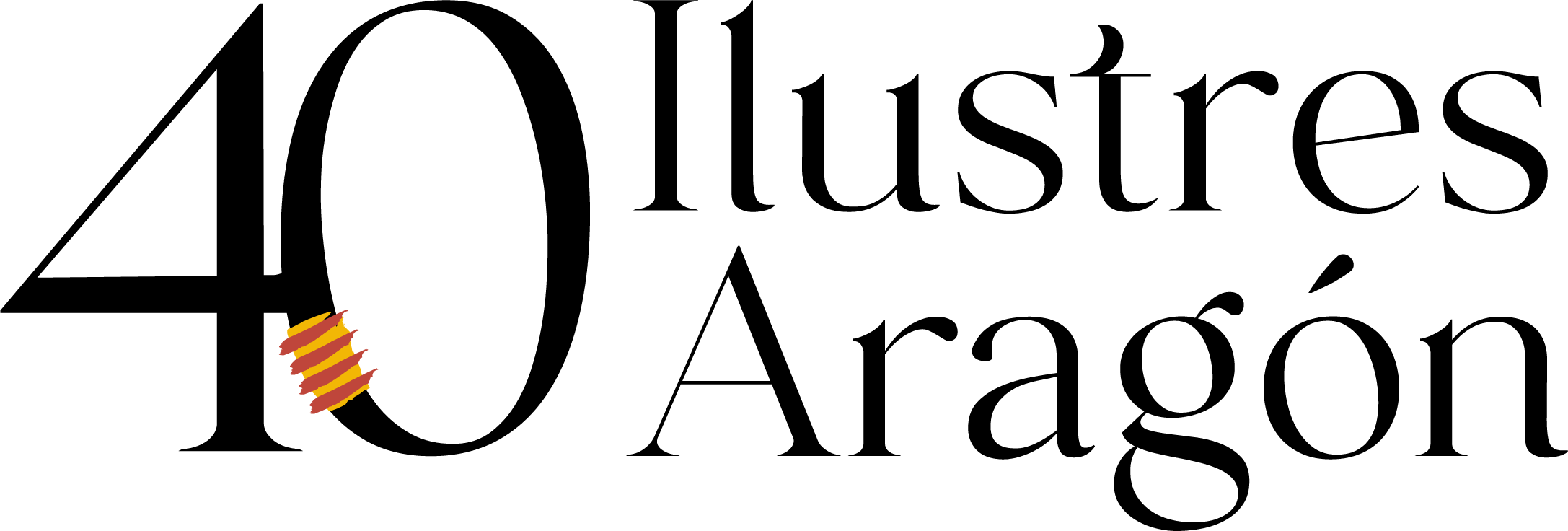Elvira de Hidalgo
Enveloping voice, peerless master
Valderrobres/Vall de Roures, 1891 – Milán, 1980
Elvira Juana Rodríguez Raglán (her father, Pedro, was from Granada; her mother, Miguela, from the same Valderrobres/Vall de Roures) showed splendid gifts for music from an early age. When her family settled in Barcelona, her father took her to study singing at the Conservatorio del Liceo with the soprano Conchita Bordalba. The help of a patron enabled her, at the age of sixteen, to continue her studies in Milan with the maestro Melchor Vidal and to make her debut at the San Carlo theatre in Naples playing Rosina in The Barber of Seville. This highly acclaimed role, which she was to perform many times, was to mark the beginning of a brilliant career: she was contracted to perform in Paris and Monte Carlo, and also performed in Cairo and Prague.
She took the “Hidalgo” from her paternal grandmother. Elvira was a dramatic coloratura soprano (also called soprano d’agilità), with an agile voice capable of executing notes at great speed, in an ornate style, with trills. Her timbre was warm, soft and sweet on the one hand, but also powerful and vibrant on the other. This wide register allowed her to dare with very intense high notes and to control the low ones thanks to an innovative technique in the chest tessitura, which she would later pass on to her pupil Maria Callas.

Life
In 1910, at the age of eighteen, she was already acclaimed in the United States. She was the youngest to make her debut as prima donna at the Metropolitan in New York, where she played Gilda in Rigoletto alongside the great tenor Enrico Caruso (she would also perform this work years later, in the 1920s, with Miguel Fleta in Buenos Aires and Madrid). Back in Europe, Vienna, Florence and, the following year, his debut at the Constanzi in Rome, the Teatro Real in Madrid and the Liceo in Barcelona awaited him. When in 1916 La Scala in Milan celebrated the centenary of The Barber of Seville, Elvira de Hidalgo was the undisputed Rosina: a lively, mischievous and capricious character, at the same time candid and melancholic, into which she was able to penetrate psychologically, perhaps because she resembled her somewhat.
During these years, her fame grew. In 1915 she married an Italian marquis, Guido Zarabelli, from whom she was soon widowed, and she rubbed shoulders with rich and powerful people: she was sought after and loved by politicians and aristocrats, the Aga Khan and a Romanov proposed to her… but she always put her career before her passions and affections. Later, in 1928, she married again, this time to the Frenchman Armand Bette, from whom she led a fairly independent life. Elvira did not give up her travels around the world (from the more established stages of Europe and America to other less usual ones, such as Havana or Helsinki).
Work
During the thirties, she began to space out her performances; she realised that her voice, which she had pushed to its limits, could no longer give her any more. In his forties, the pace of life and the hustle and bustle of travel called for a break, and he redirected his career towards teaching. From 1936 he taught singing in Athens. It was there that, one day, a shy and self-conscious-looking teenager arrived in her classroom: “an ugly duckling” in whom the teacher detected a hidden treasure.
The daughter of immigrants to the United States, New Yorker Maria Anna Cecilia Sofia Kalogeropoúlou had returned to Greece with her mother and sister. Elvira, whose pedagogical approach was to encourage companionship among her pupils without neglecting demands and discipline, invested all her knowledge and effort in this young girl. Convinced that she had before her a first-class soprano (in contrast to her former teacher, who considered her to be a mezzo-soprano), she used on the girl the techniques with which she herself had triumphed: a millimetric dosage of the air based on an extreme opening of the larynx for the emission and attack of the treble and over-treble notes. In this way Maria Callas was forged as a sfogato soprano, unlimited, with a very wide range of registers.

Diva
This great diva was eternally grateful to her teacher: “To Elvira de Hidalgo I owe all my preparation and my artistic training as an actress and musician. As well as giving me her valuable teaching, this woman also gave me her heart”. Indeed, the Aragonese woman not only taught her to exploit her musical worth and singing potential: she transformed her physically, gave her elegance, turned her into an actress, endowed her with gestural language, drama and expressiveness. She also gave her self-esteem and security, she was an advisor, confidant and accomplice. Elvira found in Maria the daughter she never had and played a certain maternal role towards her. In German-occupied Greece, she prepared her pupil to sing the two operas most representative of the struggle for freedom and against torture: Puccini’s Tosca and Beethoven’s Fidelio. From then on, Maria began to open her own book.
Later, in the 1950s, Elvira de Hidalgo went to the Ankara Conservatory, presided over juries and courts, and in 1959 she returned to Milan, where she was a life professor at the La Scala Conservatory. She had always been a cheerful, vital and inclusive woman, who exuded generosity and sympathy, and in her last twenty years she did not lose any of that character: she combined her singing lessons with her social life, lavishing herself with dinners and parties at home, evenings attended by people of culture and the arts, journalists, business people, etc. She kept in close contact with her beloved Maria Callas and was heartbroken when the Greek-born diva died suddenly, in her Paris flat, in front of a portrait of Elvira. It was 1977 and his teacher was to outlive him by less than three years.
References
- Virginia López Enano (2018): “Elvira de Hidalgo, la soprano española que descubrió a María Callas. El País Semanal. https://elpais.com/elpais/2018/08/21/eps/1534848978_452121.html
- Miguel Ángel Santolaria: “Elvira de Hidalgo” (entrada de blog). https://www.zaragoza-ciudad.com/masantolaria/elvirahidalgo.html
- Juan Villalba (2021): Elvira de Hidalgo. De prima donna a maestra de María Callas. Madrid: Fórcola Ediciones.
- Elvira de Hidalgo. Donare la divinità. Vicky Calavia. Documental de 2021 (55 minutos). Tráiler here: https://vimeo.com/vickycalavia
- Mujeres que son tesoros. Guía didáctica. Zaragoza, Instituto Aragonés de la Mujer, 2020. https://bibliotecavirtual.aragon.es/i18n/catalogo_imagenes/grupo.cmd?path=3718032
Teaching activities
Immortal characters
Elvira de Hidalgo gave great performances in her female characters, to which she gave a singular richness of gesture. Using some of the information provided in the biography, and other information you can look up on the Internet, complete this table of the characters she brought to life, with their corresponding works and authors.
| Character | Work | Composer |
| Rosina | ||
| La Sonámbula | ||
| Zerlina | Mozart | |
| L’elisir d’amore | ||
| Gilda | Verdi |
Solutions:
Rosina. El barbero de Sevilla. Rossini
Amina. La Sonámbula. Bellini
Zerlina. Don Giovanni. Mozart
Adina. L’elisir d’amore. Donizetti
Gilda. Rigoletto. Verdi
Listening to Elvira de Hidalgo and her pupil
Order these registers of the female voice, from the highest to the lowest:
Mezzo-soprano / Contralto / Soprano
Solution: soprano (high voice), mezzo-soprano (middle voice), and alto (low voice).
Although she gave other great performances, in Rossini’s El barbero de Sevilla, Elvira gave the best of her art. As well as expressing her virtues as a singer for the character of Rosina, Hidalgo displayed an attractive staging, highlighting the play of feminine seduction through the hidden language of the fan.
An example of her excellence as a soprano is “Una voce poco fa” from El barbero de Sevilla.
Elvira recorded many recordings on gramophone slate discs in studios in Milan, Athens and London. Her voice has been preserved thanks to some compilations on compact disc, adding contributions from private individuals and interspersing some of them with recordings by Maria Callas.
Find out about words you’ve probably never heard before: What is an aria? What is an encore? What is a slate record? What is a gramophone?
Maria Callas is considered the great female voice that dominated the world operatic scene between the 1950s and 1970s. Her unique beauty (rather glamour) and elegance, her personal and social life, made her an enormously popular figure.
Understanding opera and more
Popular culture, after all, is full of contributions linked to the world of opera, which is no longer perceived as something so “exclusive”.
Research and gather information on these two works of art (a film from 1935 and a rock record from 1975) that have the same title (including the possibility of appreciating both works and enjoying them in their entirety):
-
- A Night at the Opera (Marx Brothers film): have you ever heard the phrase: “It’s like the Marx Brothers’ stateroom in here”?
- A Night at the Opera (album by the British band Queen): their most popular song is “Bohemian Rhapsody”. What is a rhapsody?
- A Night at the Opera (Marx Brothers film): have you ever heard the phrase: “It’s like the Marx Brothers’ stateroom in here”?
Sister personalities
Elvira de Hidalgo formed friendships and good relationships with other determined and enterprising women who used their creativity and their art as a weapon to develop in a world dominated by men.
Match these names with the description that best describes them:
1) Anna Pávlova
2) Coco Chanel
3) Loïe Fuller
4) Josephine Baker
a) Dancer, singer and actress and fighter for social rights.
b) French haute couture designer
c) Grand ballerina of the Imperial Russian Ballet
d) American dancer, actress, producer and writer, an innovator in staging and visual effects
Solutions: 1-c; 2-b; 3-d; 4-a
Elvira’s village… for eternity
Locate Valderrobres on the map of Aragon. Which province and region does it belong to?
This town belongs to the Catalan linguistic domain of Aragon. Learn a little more about this diverse and enriching reality on this website.
Her family was not rooted in this town, they settled in Barcelona when Elvira was very young, and she (a globetrotter during her years of artistic life and, later, settled in Greece, Turkey and Italy for her profession and without relatives in her native town) never kept visible ties with it. But Valderrobres and its neighbours knew how to live up to it. Since her death in January 1980, Elvira was laid to rest in a Milanese cemetery: as the years went by, as the lease was not renewed, there was the possibility that her remains would end up in a mass grave.
The Town Council of Valderrobres and the Valderrobres Patrimonial Foundation started some steps that gave their fruit with the transfer of the remains of Elvira to the cemetery of the capital of the Matarranya, the remembrance of her figure, and a permanent exhibition with materials, objects, documents and images that bring us closer to the personality of this unique woman.
Valderrobres is a town with a very interesting heritage and located in a very welcoming environment. Plan an excursion that includes, of course, a visit to the museum dedicated to her illustrious daughter.
In 2003, the town had already hosted a lyrical gala in homage to its illustrious daughter, organised by the Asociación de Amigos de la Música de Saragossa.
More recently, research (such as a doctoral thesis at the Complutense University by Zoila Martínez) and other works and informative projects such as those mentioned in the references… have helped Elvira de Hidalgo to be increasingly recognised.


DIRECCIÓN GENERAL DE POLÍTICA LINGÜÍSTICA
Departamento de Educación, Cultura y Deporte
Parque Empresarial Dinamiza (Recinto Expo)
Avenida de Ranillas, 5D - 2ª planta
50018 Zaragoza
Tfno: 976 71 54 65
Colabora:


